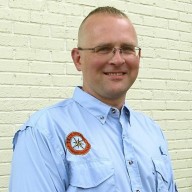Gear List: The SAM Splint
While I teach survival and wilderness medicine courses, I really don’t like to refer to myself as an “instructor.” In fact, each time that I do, I cringe inside. Certainly, I understand the appropriate context of the word, but, to me at least, it purports that I know it all. Which I don’t. Every time I teach a class, no matter whether its advanced or beginner, I learn something new. And in between classes I continue to try to learn. Which is frustrating sometimes because it seems that the more I learn, the more I realize how much I don’t know! So the process of learning never ends. I see myself, then, as a student.
While teaching a Wilderness First Aid (WFA) course last weekend to a group of Scout leaders, one asked me a question about the SAM splint that we were using at the time. I was able to answer his question, but the nature of it got me wondering about a few other issues which I decided that I should research when I got home. I am glad that I did. Even though I have used a SAM splint periodically for 10 years, I learned more this week that will allow me to teach more effectively as well as improve my patient care. Let me share a little bit with you.
What is a SAM Splint? This first aid tool, often referred to simply as a “SAM,” is a thin strip of aluminum (about 4 inches wide), coated in polyethylene foam, that comes in a variety of sizes, from 1.8 inches to 36 inches long. It’s designed for immobilizing bone and soft tissue injuries in a variety of emergency settings, whether out on the trail or on an ambulance. It was invented by a Sam Scheinberg (Get it?! “Sam”), who as a trauma surgeon during the Vietnam War, discovered that medics were generally ignoring the standard splint issued by the military. So Scheinberg developed his prototype after playing with foil wrapper surrounding his chewing gum. Though the SAM is extremely malleable, once folded into a curve, it becomes quite rigid and capable of immobilizing a number of different wounds, from a leg, to a forearm, even to stabilize a neck. Then after it’s used, the SAM can be easily cleaned, rerolled, and reused on a new patient in a completely different setting.
While doing my research, I came across the SAM Medical website which is (not surprisingly) a great training resource which I will continue to revisit.
If you would like to learn more, too, then check out this video:
http://www.youtube.com/watch?v=lPmVTKuSbio&feature=player_embedded

